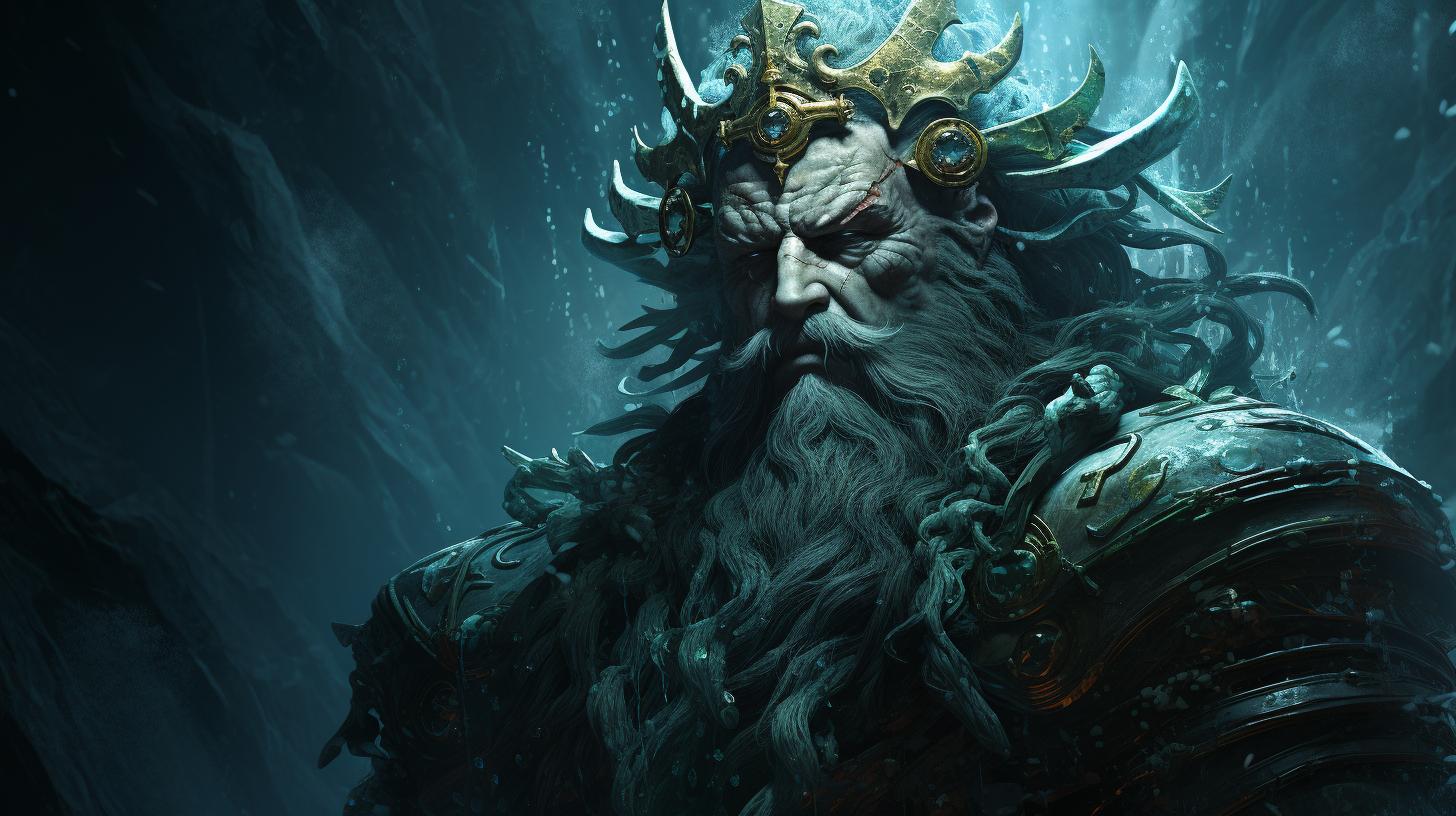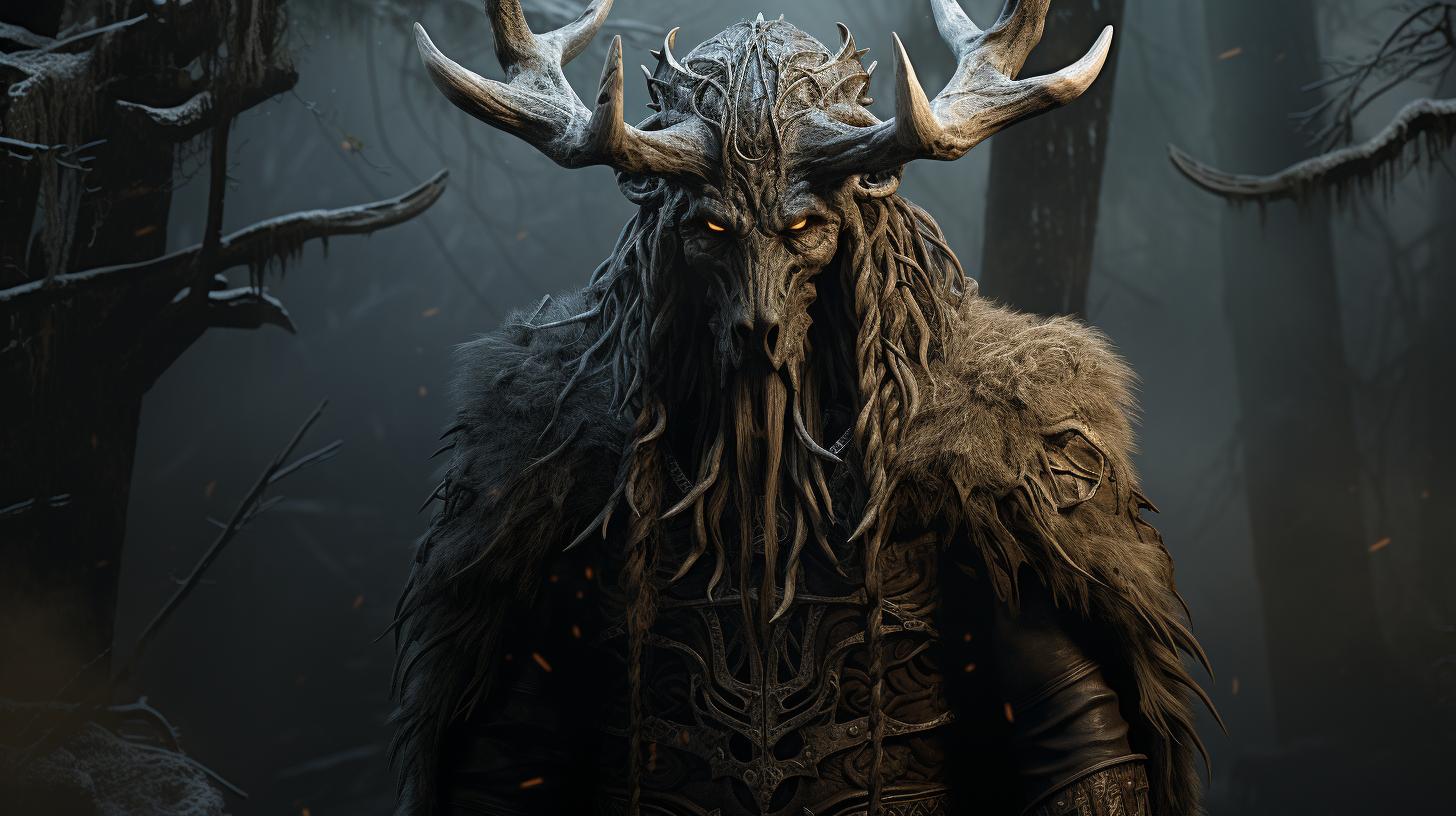‘Tuonetar Goddess: Unveiling the Mysterious Queen of the Finnish Underworld’

Tuonetar, the goddess of death, holds a prominent role in Finnish mythology, specifically as the queen of Tuonela, the Finnish underworld. Married to Tuoni, they together govern over the realm of Tuonela.
Tuonetar is the mother of various diseases, monsters, and plagues. In the Kalevala, she deceives Väinämöinen with a poisonous beer, but he manages to escape her realm. This article explores Tuonetar’s background, her family, her encounters with Väinämöinen, and her supernatural powers.
Additionally, it delves into her significance in Finnish paganism and folklore.
The Background of Tuonetar in Finnish Mythology
In Finnish mythology, Tuonetar is a prominent figure known as the goddess of death and the queen of Tuonela, the Finnish underworld. She holds a significant role in the mythical beliefs of the ancient Finno-Ugric tribes.
Tuonetar is often depicted as a powerful and mysterious deity, associated with the realm of the dead and the afterlife.
The mythology portrays Tuonetar as the wife of Tuoni, with whom she rules over Tuonela, the Finnish equivalent of the underworld.
Together, they govern the land of the deceased, ensuring its functioning and maintaining control over the souls of the departed.
As the ruler of Tuonela, Tuonetar bears the responsibility of overseeing the transition of souls into the afterlife.
Her role involves guiding and receiving the spirits of the deceased into her realm, where they find solace and rest. She holds the power to determine the fate of these souls, granting them either peace or punishment based on their past actions in the mortal world.
Within Finnish mythology, Tuonetar’s significance extends beyond her role as the queen of the underworld. She is also attributed as the mother of various diseases, monsters, and plagues, further amplifying her influence over the realms of life and death.
This portrayal highlights her connection to the cycle of existence, as she not only welcomes the souls of the departed but also brings afflictions upon the living.
The myths surrounding Tuonetar often depict her as a complex and enigmatic figure.
Her interactions with other mythological characters, such as Väinämöinen, provide insight into her personality and supernatural abilities. The tales showcase her cunning, power, and determination to maintain control over Tuonela and prevent the escape of the living from her domain.
Exploring the background of Tuonetar in Finnish mythology offers a captivating glimpse into the intricate beliefs and folklore of the ancient Finno-Ugric tribes. Understanding her role as the goddess of death and the queen of Tuonela sheds light on the cultural significance and unique cosmology of Finnish mythology.
The Role of Tuonetar in Tuonela, the Finnish Underworld
Tuonetar plays a significant role in the mysterious realm of Tuonela, the Finnish underworld. As the queen of Tuonela, she governs alongside her husband Tuoni, creating an enigmatic and powerful duo that holds dominion over the land of the dead.
Tuonetar’s Marriage to Tuoni
Tuonetar’s marriage to Tuoni solidifies their joint authority over Tuonela. Together, they form a formidable pair, ruling over the underworld with a combination of wisdom, strength, and otherworldly power.
Ruling Over Tuonela with Tuoni
Operating as the governing entities of Tuonela, Tuonetar and Tuoni oversee the various aspects of the Finnish underworld.
Their rule extends beyond mere governance, as they embody the essence of death and the afterlife, embodying the very fabric of existence in Tuonela.
Within Tuonela, Tuonetar holds immense influence. She wields authority in matters of life and death, specifically focusing on the realm of the deceased and their journey through the afterlife.
Her role involves guiding and overseeing the souls of the departed, ensuring their transition into the realm of the dead is smooth and orderly.
Alongside Tuoni, Tuonetar maintains harmony and balance in Tuonela.
Their collective presence shapes the experiences of both the departed and any visitors who find themselves within the mysterious borders of the Finnish underworld. Together, they shape the fabric of existence and contribute to the intricate tapestry that is Tuonela.
Throughout the ages, Tuonetar’s role as the queen of the Finnish underworld has captured the fascination and intrigue of those who dare to explore the depths of Finnish mythology. Her significant presence in Tuonela and her unique relationship with Tuoni make her a central figure in the rich tapestry of Finnish folklore and mystical tales.
The Family of Tuonetar
The goddess Tuonetar, as the queen of the Finnish underworld Tuonela, has a family that plays a significant role in Finnish mythology and folklore. Within her divine lineage, she has five daughters: Loviatar, Kalma, Vammatar, Kipu-tyttö, and Kivutar.
Each daughter possesses distinct attributes and powers, highlighting their unique roles within the realm of Tuonela.
Tuonetar’s Daughters: Loviatar, Kalma, Vammatar, Kipu-tyttö, and Kivutar
One of Tuonetar’s renowned daughters is Loviatar, often associated with disease and suffering. She brings forth various afflictions upon living beings. Kalma, another daughter, is linked to death itself and guides the souls of the deceased to Tuonela.
Vammatar, on the other hand, embodies calamity and is known for her ability to cause misfortune and disasters.
Moreover, Tuonetar’s daughters Kipu-tyttö and Kivutar both represent physiological and emotional pain. Kipu-tyttö is associated with physical ailments and torturous sensations, while Kivutar is the goddess of sorrow and grief.
Tuonetar’s Husband: Tuoni
The partner of Tuonetar is Tuoni, who shares ruling authority over Tuonela. As Tuonetar’s spouse, Tuoni is often portrayed as the god of death and the underworld. Together, Tuonetar and Tuoni govern the realms of the Finnish afterlife, shaping the experiences of souls that journey through their domain.
Tuonetar and Väinämöinen in the Kalevala
In the Kalevala, the national epic of Finland, the encounter between Tuonetar and Väinämöinen, the main protagonist, is a pivotal moment in the story.
Tuonetar’s Deception with the Poisonous Beer
When Väinämöinen arrives in Tuonela, Tuonetar greets him and offers him a drink from a golden cup, which she claims is beer. However, upon closer inspection, Väinämöinen discovers that the beverage is actually a toxic concoction known as the ‘Beer of Oblivion.’
This dark brew is made from frog eggs, venomous young snakes, lizards, vipers, and worms. If consumed, it would cause a person to forget their own existence and forever remain in the land of the dead.
Tuonetar, along with her children, are the only ones able to leave Tuonela.
Väinämöinen’s Escape from Tuonela
Despite Tuonetar’s refusal to reveal the three magical words that Väinämöinen seeks, he manages to outwit her. Tuonetar uses her magical wand to put Väinämöinen to sleep and orders Tuonen poika to weave a thousand nets of iron and copper to trap him if he tries to escape through the River of Tuoni. However, Väinämöinen transforms into a snake and skillfully swims through the nets, eluding capture.
He returns to Kalevala and warns the people not to sin, lest they too end up in Tuonela.
- Tuonetar tries to deceive Väinämöinen with poisonous beer
- Väinämöinen discovers the truth and escapes Tuonela
This encounter between Tuonetar and Väinämöinen showcases both Tuonetar’s deceitful nature and Väinämöinen’s cleverness and resourcefulness.
It highlights the challenges faced by those who venture into the realm of the dead and the importance of wit and perseverance.
Tuonetar’s Powers and Abilities
Tuonetar, the goddess of death and queen of Tuonela, possesses a range of extraordinary powers and abilities that set her apart from mortal beings. Her divine nature grants her immense strength, longevity, and eternal beauty.
Supernatural Strength and Longevity
Tuonetar exhibits supernatural strength, surpassing that of ordinary beings. Her physical might enables her to overcome challenges and exert control over her realm in Tuonela. Additionally, her longevity allows her to exist indefinitely, unaffected by the passage of time.
Control over Death and Disease
As the goddess of death, Tuonetar holds dominion over the realm of mortality. She is attributed with the ability to influence and perpetuate various diseases, monsters, and plagues that afflict the living.
Her command over these forces grants her immense power within the sphere of life and death.
Manipulation of Hidden Energies and Magical Skills
Tuonetar possesses the gift of manipulating hidden energies and tapping into mystical forces. She can channel these energies to manifest potent abilities such as conjuring and controlling elemental fire, erecting protective barriers, and creating spheres of mystical energy.
Additionally, she holds the power to shape reality within Tuonela and create illusions, influencing the perceptions and experiences of those who venture into her realm.
By absorbing souls and astral energies, Tuonetar can augment her own powers, further amplifying her abilities and strengthening her connection to the underworld.
She is a formidable and enigmatic force, capable of wielding her mystical skills to enforce the boundaries of her realm and maintain her dominion over Tuonela.
Tuonetar in Finnish Paganism and Tales
Tuonetar, the goddess of death and ruler of Tuonela, holds a significant place in Finnish paganism and folklore.
Her presence is deeply woven into the beliefs and tales of ancient Finnish culture.
Worship and Beliefs around Tuonetar
In Finnish paganism, Tuonetar was venerated and feared as the powerful deity who presided over the realm of the dead. Devotees held rituals and ceremonies to honor her and seek her protection.
They believed that appeasing Tuonetar was crucial for a smooth journey to the afterlife.
Worshipers offered prayers, sacrifices, and performed sacred rites to gain Tuonetar’s favor and blessings. They sought her intervention to ward off the diseases and misfortunes that she was believed to control.
Tuonetar’s worship played a vital role in the spiritual lives of the ancient Finnish people, providing them solace and guidance in the face of mortality.
Legends and folklore surrounding Tuonetar further embellished her status as a revered figure.
Her stories were passed down through generations, perpetuating the reverence and awe associated with her name.
Depictions of Tuonetar in Finnish Folklore
- Tuonetar was often portrayed as a dark and mysterious deity, with a regal and otherworldly presence.
- She was depicted as an enigmatic queen, bearing symbols of death and decay.
- Legends cast her as a formidable figure, able to control the forces of disease and unleash plagues.
- Tuonetar’s daughters, Loviatar, Kalma, Vammatar, Kipu-tyttö, and Kivutar, also held prominent roles in Finnish folklore, embodying various aspects of pain, death, and suffering.
These myths and tales emphasized the importance of Tuonetar’s existence as a powerful force in Finnish culture, shaping the perception and understanding of death and the afterlife.
The worship and belief systems associated with Tuonetar have left an indelible mark on Finnish folklore and continue to inspire fascination and intrigue to this day.
.




















